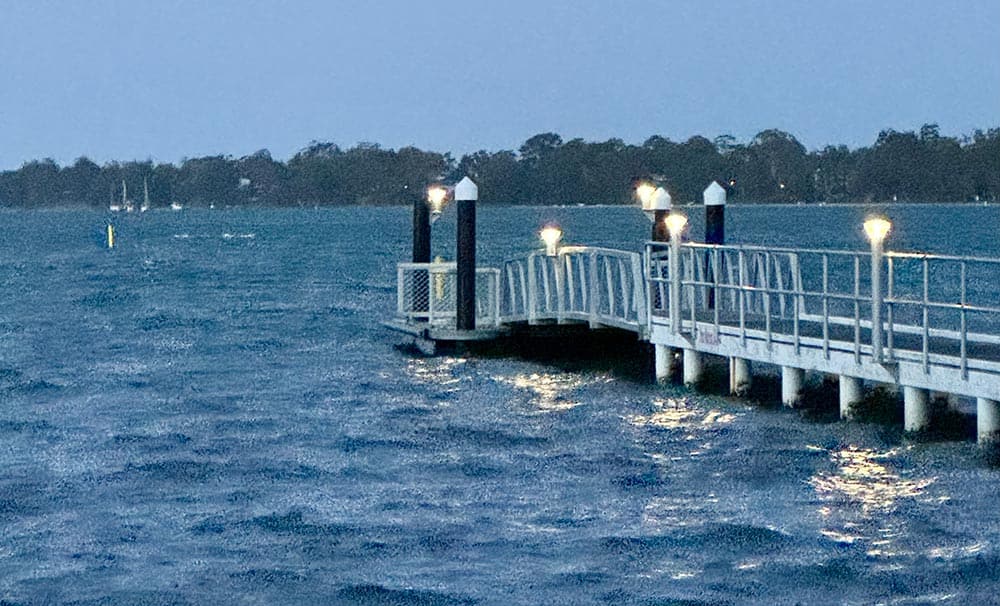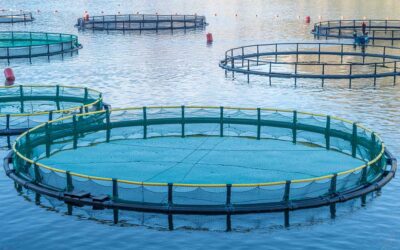
Carbon credits in aquaculture are tied to the capture or removal of carbon dioxide from the atmosphere through biological processes in marine farming systems. This is known as blue carbon.
Key mechanisms in aquaculture include:
- Seaweed farming (macroalgae): Seaweeds absorb large amounts of CO₂ through photosynthesis. If sequestered (e.g. buried or sunk), this biomass can potentially generate credits.
- Shellfish cultivation: Oysters, mussels, and clams incorporate calcium carbonate in their shells, which may store carbon over time.
- Seagrass restoration (if linked to aquaculture projects): Replanting seagrass beds in conjunction with aquaculture activities may also create carbon value.
How Carbon Credits Are Claimed in Aquaculture
To claim credits under Australia’s regulated carbon market, you must follow the process under the Emissions Reduction Fund (ERF), now integrated into the Australian Carbon Credit Units (ACCUs) scheme:
1.Methodology Approval
- A methodology sets out how emissions reductions or sequestration must be measured and verified.
- As of 2025, the “Aquatic Carbon Methodology” is in draft stage, under review by the Clean Energy Regulator (CER).
- Final approval is expected to allow aquaculture-specific credits (likely limited to non-extractive seaweed and shellfish systems).
2. Project Registration
- The project must be registered with the CER.
- You must submit a project plan that outlines:
- Carbon flows and sequestration potential
- Baseline emissions and monitoring
- Site control and tenure rights
3. Monitoring & Reporting
- Ongoing data must be gathered on carbon removal volumes, site integrity, and permanence.
- Independent audits are required at intervals to validate credit claims.
4. Issuance of Credits
-
- Upon approval of reports and audits, ACCUs are issued.
- These can be sold in:
- The compliance market (e.g. to companies required to offset emissions)
- The voluntary market (to businesses or individuals choosing to offset)
Value of Aquaculture Carbon Credits
Market value depends on:
- Demand (compliance vs voluntary buyers)
- Project type and co-benefits (e.g. biodiversity, First Nations partnerships)
- Credibility and permanence of the sequestration
As of mid-2025:
- ACCU prices are trading between AUD $30–$45 per tonne of CO₂-e
- Premiums are paid for projects that:
-
- Provide verified biodiversity or social co-benefits
- Are “additional” (i.e. wouldn’t have occurred without the incentive)
- Meet strong measurement and permanence standards
Legal Issues in Aquaculture Carbon Credits
1.Legal Ownership of Carbon Rights
- Marine leases may be held under state tenure – ownership of carbon credits derived from activities on Crown land/water is still unclear in most states.
- Contractual rights between operator and landowner (or sea lease authority) must clearly allocate carbon rights.
2. Methodology Gaps
- Until a full approved methodology is finalised, projects can’t generate ACCUs.
- Legal advice should be obtained before making financial decisions on future credits.
3. Tenure and Exclusivity
- Credits can only be claimed if you have exclusive legal rights to manage the area and carbon resource (e.g. kelp farm boundaries).
- Overlapping uses (e.g. public access, fisheries) complicate legal clarity.
4. Permanence Requirements
- Projects must guarantee 25 to 100 years of carbon storage.
- Legal structures (e.g. conservation covenants, marine zoning) may be required to demonstrate permanence.
5. Dispute and Risk Allocation
- Contracts must address:
- Liability for underperformance
- Credit transfer terms
- Termination events and force majeure
- Audit and reporting failures
6. First Nations Interests
- Where claims under Native Title or sea country rights exist, there may be additional legal requirements or negotiation obligations (e.g. ILUAs).
Key Takeaways for Operators
- Aquaculture carbon credits are real but not yet fully unlocked; the draft methodology is a key turning point.
- Legal ownership and regulatory clarity are not automatic — rights must be secured.
- Projects must be designed early to meet measurement, tenure, and permanence requirements.
- There is significant future upside if structured correctly and partnered with robust legal, scientific, and policy support.
A Practical Checklist
Aquaculture operators planning to generate carbon credits in Australia, especially through seaweed, shellfish, or seagrass-associated projects under the emerging blue carbon framework.
Aquaculture Carbon Credit Project Planning Checklist
1.Eligibility and Project Scoping
- Confirm your aquaculture activity fits within the scope of the draft Aquatic Carbon Methodology (e.g. seaweed sequestration, shellfish carbonate storage)
- Ensure the project is located within Australian territorial waters (within 12 nautical miles)
- Identify whether the project delivers additional carbon benefits (i.e. would not happen without carbon funding)
- Assess potential carbon sequestration volumes with a scientific baseline or feasibility study
2. Tenure and Legal Rights
- Secure exclusive legal rights to the site (lease, licence or permit)
- Review terms of your lease or licence to confirm whether carbon rights are included or excluded
- Check for overlapping uses (e.g. fisheries, tourism, native title) that may limit control
- Consult on any Native Title or sea country implications, including possible ILUAs
3. Registration and Documentation
- Prepare and lodge a project application with the Clean Energy Regulator (CER) once the methodology is approved
- Map your project boundary with clear GIS coordinates
- Develop a project plan that includes carbon accounting, monitoring, and permanence strategy
- Set up or review corporate structures or partnerships relevant to ownership of credits
4. Monitoring and Reporting Readiness
- Install or verify the monitoring equipment and data collection protocols
- Engage a carbon consultant or scientist to prepare a baseline carbon assessment
- Develop a long-term data management plan (25–100 years permanence requirement)
- Plan for independent audit costs and timelines
5. Legal and Commercial Structuring
Draft or review contracts covering:
- Carbon ownership and revenue rights
- Joint venture or co-management agreements
- Risk and liability for underperformance
- Credit transfer and trading terms
Identify potential buyers or brokers for Australian Carbon Credit Units (ACCUs)
Consider co-benefit certifications (e.g. biodiversity, First Nations partnerships) for premium pricing
6. Risk Management and Compliance
- Include climate, biosecurity, and operational risks in project documentation
- Set up an insurance and legal compliance review
- Align carbon project obligations with aquaculture site and environmental licence conditions
- Understand CER obligations for revocation, suspension or reversal events
7. Timeline and Budgeting
Allow for 12–24 months to prepare and register a project under the new methodology
Include line items in your budget for:
- Legal and compliance advice
- Carbon consultancy and audit fees
- Monitoring equipment or upgrades
- CER registration and administrative costs
Want help building your carbon-ready project?
Aquarius Lawyers can:
- Review lease and licence conditions for carbon rights
- Draft compliant project and joint venture agreements
- Coordinate with scientific consultants and regulators
- Help you negotiate with First Nations stakeholders and investors
Call us on 02 8858 3233 to schedule a carbon-readiness consultation.



